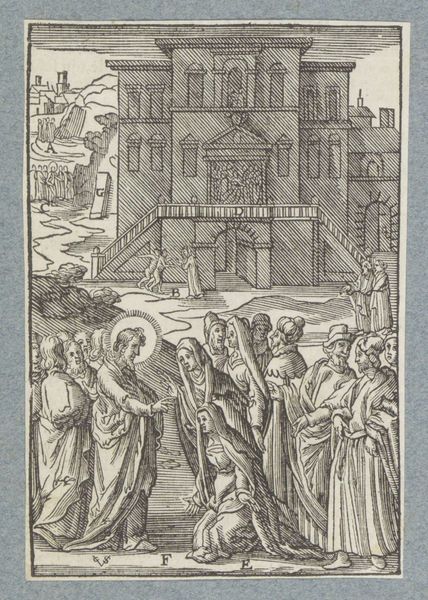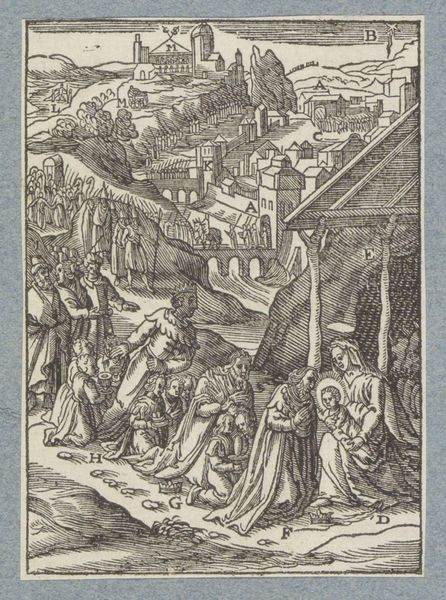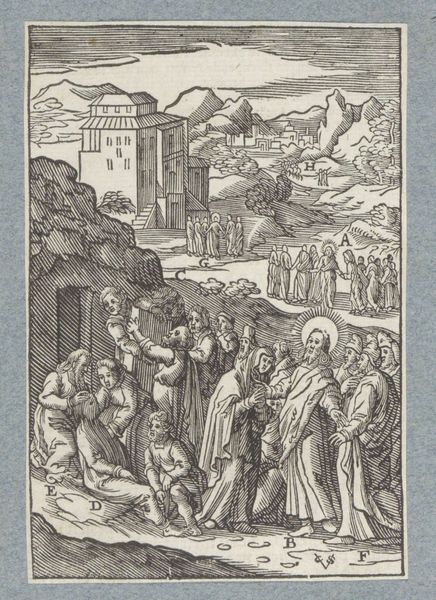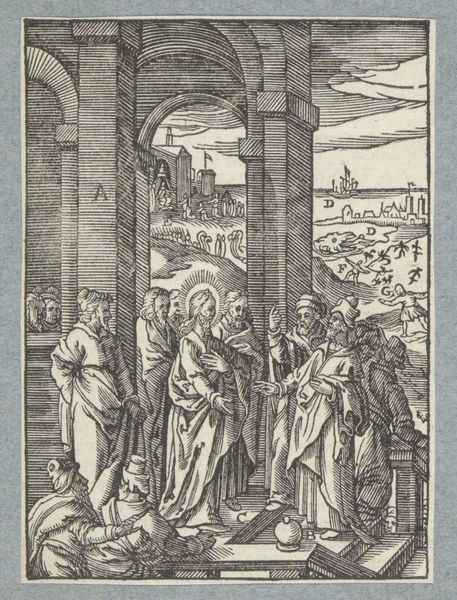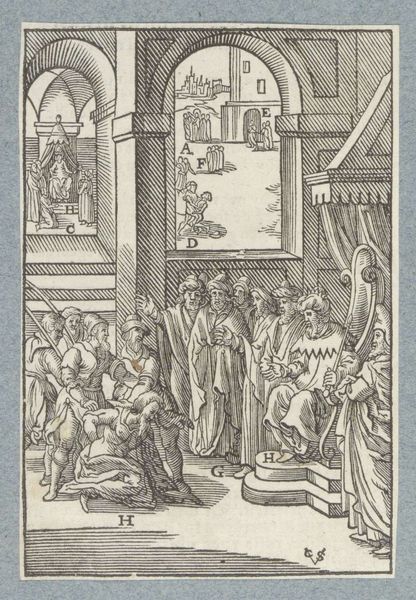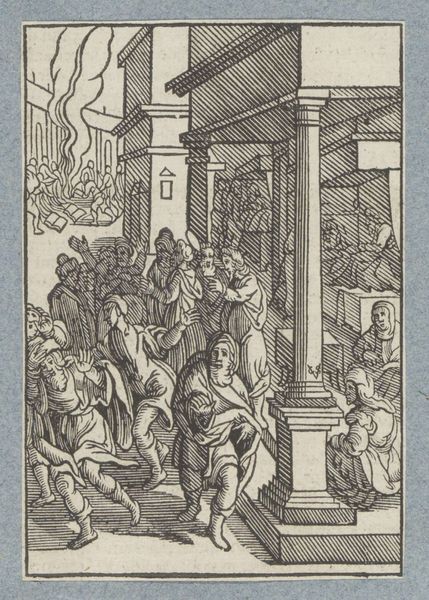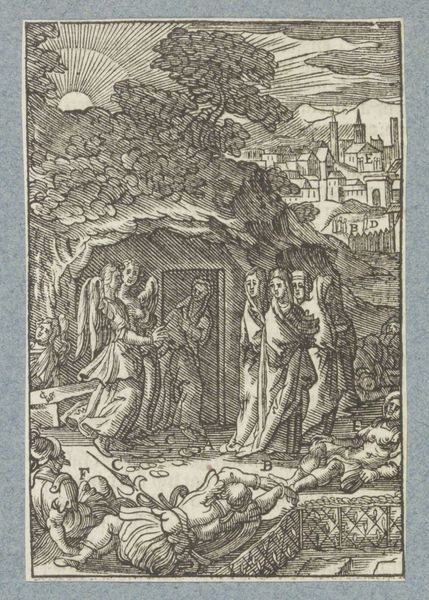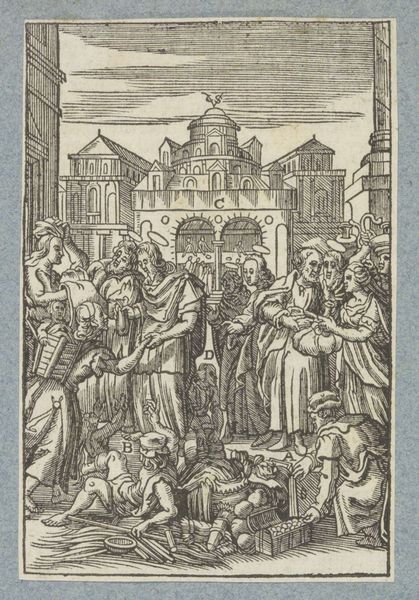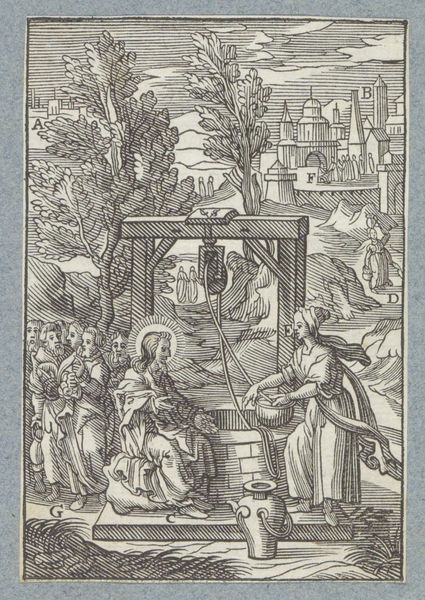
print, engraving
#
narrative-art
#
baroque
# print
#
history-painting
#
engraving
Dimensions: height 104 mm, width 76 mm
Copyright: Rijks Museum: Open Domain
Curator: Take a look at "Healing of Peter’s Mother-in-Law," an engraving by Christoffel van Sichem II, dating back to 1629. The work is currently housed right here in the Rijksmuseum. Editor: My first impression? There’s an incredible intensity packed into such a small format. The density of the lines creates a dramatic and somewhat claustrophobic atmosphere. Curator: Indeed. The artist masterfully employs the print medium to address complex issues of power and social relationships within a biblical context. The domestic setting transforms into a stage for divine intervention, highlighting the precarious role of women, particularly in matters of health and healing. Note that in most period narratives, it is typically a woman responsible for managing sickness in the household. Editor: Absolutely. I’m drawn to how the linear quality and contrast create a strong sense of depth, pulling the viewer into the scene. It’s an excellent example of Baroque printmaking—that push and pull, the dynamic composition…it's all there in the intricate linework. There's so much depth, a feeling of recession achieved solely through hatching. Curator: And there is a great narrative and gender component to the narrative, too. The central act of healing isn't merely a demonstration of divine power; it's also a disruption of social norms. To show a woman being healed subverts expectations, and makes her somehow more central in the narrative. Editor: Yes, though the artist uses an almost relentless visual vocabulary—dense lines, compressed space— to heighten the scene's impact, and give emphasis. Each mark contributes to the whole, driving home the emotional weight of the moment. Curator: Exactly. Through Sichem’s sharp, deliberate lines, the act of healing becomes a moment of profound social commentary, opening dialogues about illness, faith, and marginalized voices in society. It urges us to reflect on the roles of different actors on history's stage. Editor: What I appreciate most is how the visual structure embodies this intensity, showcasing the raw communicative force of lines alone. A simple scene is transformed with amazing depth. Curator: And what I find invaluable in such works is their capacity to bring light to the human experiences within a grand religious narrative.
Comments
No comments
Be the first to comment and join the conversation on the ultimate creative platform.

